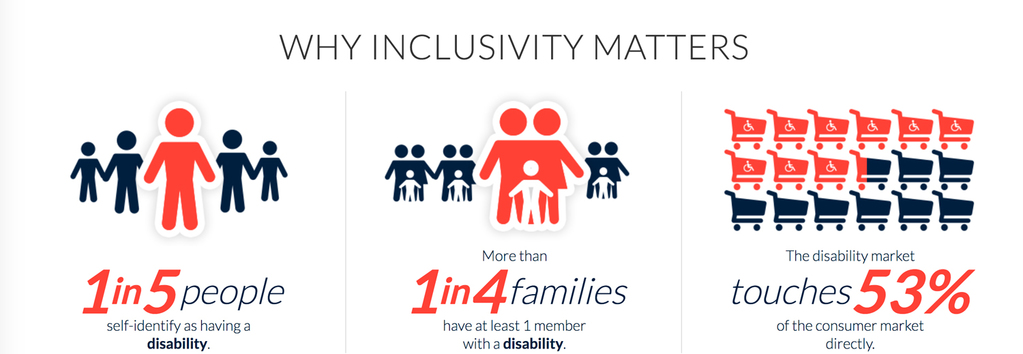How Do Healthcare Organizations Go Beyond Minimum Requirements to Make Digital Experiences Welcoming to People of All Abilities?
Ask the Expert with Simon Dermer, Managing Director, eSSENTIAL Accessibility
 // By Jared Johnson //
// By Jared Johnson //

Simon Dermer, managing director, eSSENTIAL Accessibility
Healthcare organizations that invest in their patients with disabilities reap significant rewards. They enjoy loyalty and high patient satisfaction from the largest minority group in the world. But doing so requires going beyond the minimum requirements for website accessibility. It takes an ongoing commitment to stay current on standards and involve people with disabilities in continually testing new content.
Simon Dermer, managing director for eSSENTIAL Accessibility, presented on enhancing the digital experience for patients with disabilities at the 2018 Healthcare Internet Conference (HCIC) in Scottsdale, Arizona, and we followed up with him to learn more.

eHST: In general, what types of disabilities should digital teams be designing for? Which are most common?
SD: The ones who most commonly come to mind are those who are blind, low-vision, or color-blind. If you look at any of the litigation around accessibility, it is largely tailored to blind/low vision. But cognitive/learning disabilities are actually the largest group of disabilities. When designing for accessibility, the level of compliance needed for someone who is blind or low-vision trickles down to help incorporate the accessibility needed for those with physical disabilities such as keyboard access, etc.
The other area of disabilities that may be more common when working with multimedia is deaf/hard of hearing to ensure captioning or transcripts are provided.
eHST: In general, is it getting easier or harder for healthcare organizations to design websites with accessibility in mind? Why?
SD: Designing for accessibility in general is getting easier. Accessibility and responsive design, for viewing of mobile browsers, overlap accessibility best practices, and search engine optimization is improved when incorporating accessibility. To not design with accessibility in mind, whether you’re meaning to or not, is just hurting your site from a business perspective.
Carilion Clinic and Baptist Health in Kentucky are examples of hospitals that are making their digital properties accessible.
eHST: For healthcare organizations that have not previously addressed accessibility, where do you recommend they start?
SD: Start by reviewing the age of your sites, seeing what needs to be updated, content- or design-wise, and create a list. Review your Google Analytics to know what pages are most commonly used. Determine just how many websites you have and what would need to be included in the scope of an audit. Also, determine how many documents and videos you have and what your priority would be to remediate these items based upon resources. Work with a third-party accessibility company to test the pages, provide reports, and then begin remediation to make the sites accessible.
eHST: What are the benefits of assistive technologies (AT) for the web?
SD: The benefits of featuring AT on your website is that it ensures no one with a disability is left behind. If a person needs AT to access a site and they don’t have it, then it doesn’t matter how well it’s designed. Some will get left behind.
The brick-and-mortar analogy is that if you build a perfect ramp into a building with elevators, but a person who has trouble walking doesn’t have a motor scooter, they still can’t get around inside the building. Offering motor scooters at the entrance is a form of AT.
eHST: What tips do you have for developing accessibility-related user stories? Can you give an example?
SD: When going through your main workflows, determine what is important — creating a new profile, finding a doctor, etc. — and then apply them to the various user stories of disabilities. For examples, you can refer to personas of people with disabilities created by the W3C [see sidebar].
The [Web] standards were created to help individuals with disabilities, but they ultimately make a better website for all your users. It is a universal language, so regardless of where you may be located or where your clients are located, making it accessible means the same equal access.
eHST: Can you name some hospitals/health systems that are currently good examples of designing for accessibility?
SD: The Department of Veterans Affairs Medical Centers has worked toward web accessibility for years. MedProctor has worked toward accessibility of their product.
eHST: Anything else you haven’t yet mentioned that would be useful for healthcare digital teams to keep in mind regarding accessibility?
SD: Keep accessibility in mind for kiosks. If a patient comes to sign in via a kiosk, do you have the appropriate assistive technology so that they can complete personal information independently? Are the forms accessible? The patient experience is not just the digital properties, but any technology used from the time they walk through the doors.
W3C/Web Accessibility Initiative (WAI), in partnership with organizations around the world, pursues accessibility of the Web through four primary activities:
- Ensuring that core technologies of the Web support accessibility
- Developing guidelines for Web content, user agents, and authoring tools
- Facilitating development of evaluation and repair tools for accessibility
- Conducting education and outreach
WAI has defined eight personas to illustrate the impact of accessibility barriers:
- Lee, an online shopper with color blindness
- Alex, a reporter with a repetitive stress injury
- Martine, an online student who is hard of hearing
- Ilya, a senior staff member who is blind
- Preety, a middle school student with attention deficit hyperactivity disorder and dyslexia
- Yun, a retiree with low vision, hand tremor, and mild short-term memory loss
- Luis, a supermarket assistant with Down syndrome
- Kaseem, a teenager who is deaf and blind
Email Simon Dermer at sdermer@essentialaccessibility.com.
Jared Johnson is a member of the eHealthcare Strategy & Trends Editorial Advisory Board. He is a healthcare consumer strategy advisor on a mission to make healthcare easier for everyday people. Wherever organizations are on their consumer journey, he serves as a valuable partner to help them operationalize consumer-first care through masterminds, workshops, and strategy consulting. He has produced hundreds of podcast episodes and thousands of articles, social media posts, and pages of web content as a senior digital strategist for some of the top healthcare and medtech brands in the country, including St. Jude Medical, Pfizer, W. L. Gore, and Phoenix Children’s Hospital.
Jared is a rapping keynote speaker, host of the long-running Healthcare Rap Podcast, founder of the Consumer-First Health Group, winner of the Medigy HITMC 2021 Marketer of the Year Award, and author of two books, Marketing Forward and Connect the Docs. When he isn’t challenging the status quo, he can be found running obstacle course races or hiking with his wife and their four children. Email him at jared@ulteradigital.com.

